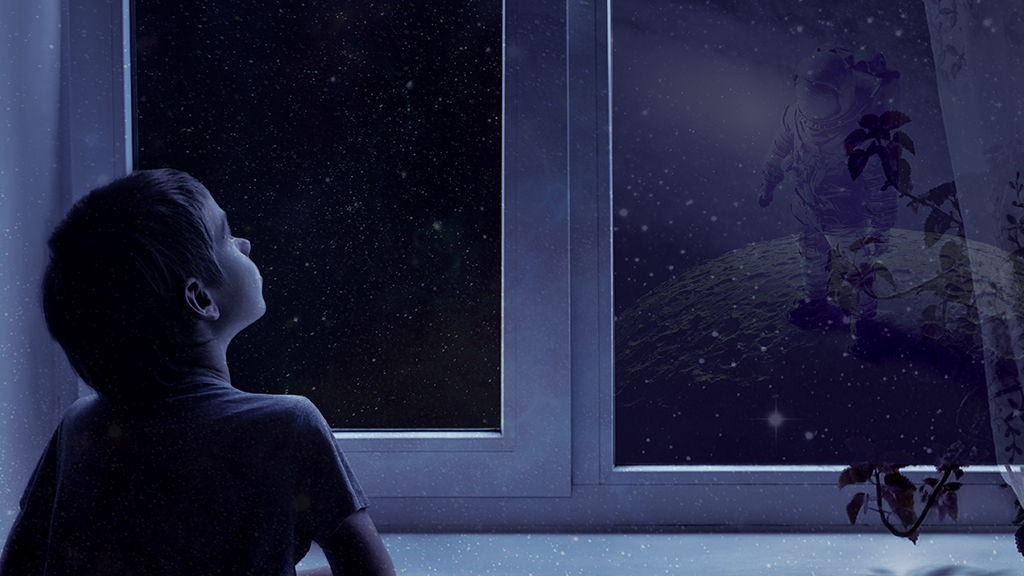American Public, Do You Copy?

From the upcoming 50th anniversary of the Apollo moon landing, the growing push for LEO commercialization, the talk of going to Mars, and the highly anticipated Artemis Moon Plan, there’s no doubt that NASA is giving the public reasons to get excited. With the alleged decline of public interest, how is NASA bridging that gap with all the great things it’s currently doing?
“So many people care about science, it’s just that it’s not delivered to them in a manner in which they can understand it. If you can tell it to them in a way that makes sense, tell them how it affects their life, then they’ll understand,” Stuckey explained.
She gave an example of testing drugs in space to treat osteoporosis.
“You lose bone density when you’re in space, so if you can test those kinds of drugs up there and it works it would definitely help people down here who are not subject to microgravity. So that’s one way to get people interested, show them how it can tangibly affect their lives here on Earth.”
Stuckey also touched on what might be the single biggest influencer of how, not just NASA, but other science-based institutions, distribute their stories: social media.
“With the advent of social media, a lot of institutions think they can just skip a step of someone who can diffuse the story. No one is vetting what is being said. They think they can just post a study on Twitter and that’s it,” she said.
“They essentially cut out the middle man, so there’s nobody to effectively communicate their research in a way that speaks to the lay audience. You need that middle man to get the information out.”
Or middle woman.
Rachel Barry is the “middle woman” for NASA’s Johnson Space Center. She is the communications managing editor for the ISS program science office.
“I help our group identify science topics to cover for our communications products and help share the stories of the science that happens on the space station. That involves identifying cool aspects of the research that would be interesting for the public,” Barry explained.
Her work involves producing science stories on social media and broadcasting the most entertaining and compelling aspects of the Johnson Space Center’s activity to the world.
“I’m not a scientist but I play one on Twitter,” she joked.
“I feel like I’ve gotten an advanced degree just working here because I’m studying the science all day every day so that I can communicate it. Because I don’t come from a science background, it’s easier for me to translate stuff that I’ve learned to lay people,” Barry continued.
It’s hard to invest time in and get excited about something you can’t comprehend. That’s precisely why Barry’s role as a communications lead is so vital to how NASA disseminates its stories to the mostly uninitiated public at large.
According to Pew researchers Amy Mitchell, Jeffrey Gottfried, and Cary Funk, “Many Americans say the public’s limited knowledge about science — as well as the way the public interprets science news — are problems. Some 44% of Americans say it is a big problem that the public doesn’t really know enough about science to understand research findings in the news.”
Moreover, Science Daily revealed that “Approximately 28 percent of American adults currently qualify as scientifically literate, an increase from around 10 percent in the late 1980s and early 1990s.”
Sure, that’s a rise in percentage, but that still leaves 72% of people who don’t even understand basic scientific concepts. Both studies show just why it’s so important for there to be a conduit of communication from researcher to news consumer. The average consumer wants to hear about science news, but they need these stories to be less esoteric and more digestible for the lay audience.
As Carl Sagan once lamented, “We live in a society exquisitely dependent on science and technology, in which hardly anyone knows anything about science and technology.”
Barry also spoke about the power of leveraging big audiences.
“We are one piece of NASA’s overall story. We have many great research stories to tell, but we don’t have access to the extensive audience that the main NASA channels do. Our strategy is to identify those big players who can help carry our message much farther. We get them excited about the science, and do everything we can to support them sharing our stories so they can, in turn, exponentially expand our reach.”
With almost a million Twitter followers and 700,000 Instagram followers, it’s incontrovertible that Barry and her team are successfully pushing out the science news and, more importantly, getting the public excited about it.
The moon landing was 50 years ago this July 20th. The public’s interest is said to have waned since that fateful day in 1969. But the fire that propels NASA to continue to innovate, to dream, still burns brilliantly. And with extraordinary, passionate storytellers like Alex Stuckey, Eric Berger, John Timmer, and Rachel Barry, perhaps that is a light that will never go out.
Let me say, as I sit here before you today having walked on the Moon, that I am myself still awed by that miracle. That awe, in me and in each of us … must be the engine of future achievement, not a slow dimming light from a time once bright.
– Buzz Aldrin, Apollo 11 astronaut



